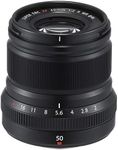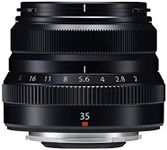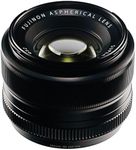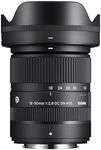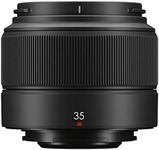Buying Guide for the Best Fujifilm Lenses
Choosing the right Fujifilm lens can make a huge difference in your photography experience. The lens you pick will affect the look of your photos, how much of the scene you can capture, and how well you can shoot in different lighting conditions. Before you buy, think about what kind of photos you want to take—portraits, landscapes, street photography, or something else. Understanding the main features of lenses will help you find one that matches your needs and style.Focal LengthFocal length is a number, measured in millimeters (mm), that tells you how 'zoomed in' a lens is. Shorter focal lengths (like 16mm or 23mm) capture a wider view, making them great for landscapes or group shots. Medium focal lengths (like 35mm or 50mm) are versatile and often used for street or portrait photography. Longer focal lengths (like 85mm or 200mm) bring distant subjects closer, which is useful for wildlife or sports. To pick the right focal length, think about what you want to photograph most often—wide for scenery, medium for everyday use, or long for distant subjects.
Aperture (Maximum f-stop)Aperture is shown as an f-number (like f/1.4, f/2.8, or f/4) and tells you how much light the lens lets in. Lower numbers mean a wider opening, which lets in more light and creates a blurry background effect (bokeh). Lenses with wide apertures (f/1.2 to f/2.8) are great for low-light situations and portraits. Higher numbers (f/4 and above) let in less light but are often smaller and lighter. If you shoot in dim places or want strong background blur, go for a lens with a lower f-number. For travel or general use, a higher f-number may be fine.
Image StabilizationImage stabilization is a feature that helps reduce blur from shaky hands, especially at slower shutter speeds or longer focal lengths. Some lenses have built-in stabilization, which is helpful if you often shoot in low light or without a tripod. If you mostly shoot in bright conditions or your camera body already has stabilization, this feature may be less important. Consider your shooting style—if you like handheld shots in tricky lighting, look for a lens with stabilization.
Autofocus Speed and NoiseAutofocus speed is how quickly the lens can focus on your subject, and noise refers to how quietly it does this. Fast and quiet autofocus is important for capturing moving subjects or shooting video, where noise can be distracting. If you mostly take still photos of non-moving subjects, slower or noisier autofocus may not be a big issue. Think about whether you need to capture action or want to shoot video, and choose accordingly.
Size and WeightThe size and weight of a lens affect how easy it is to carry and use. Smaller, lighter lenses are great for travel and street photography, while larger lenses may offer better performance but can be heavy to carry around. If you plan to walk a lot or want a compact setup, look for lighter lenses. If you don’t mind carrying extra weight for better image quality or reach, a bigger lens might suit you.
Weather SealingWeather sealing means the lens is protected against dust and moisture, making it more durable in tough conditions. This is important if you often shoot outdoors, especially in unpredictable weather. If you mostly shoot indoors or in good weather, this feature may not be necessary. Consider your shooting environment and how much protection you need.






